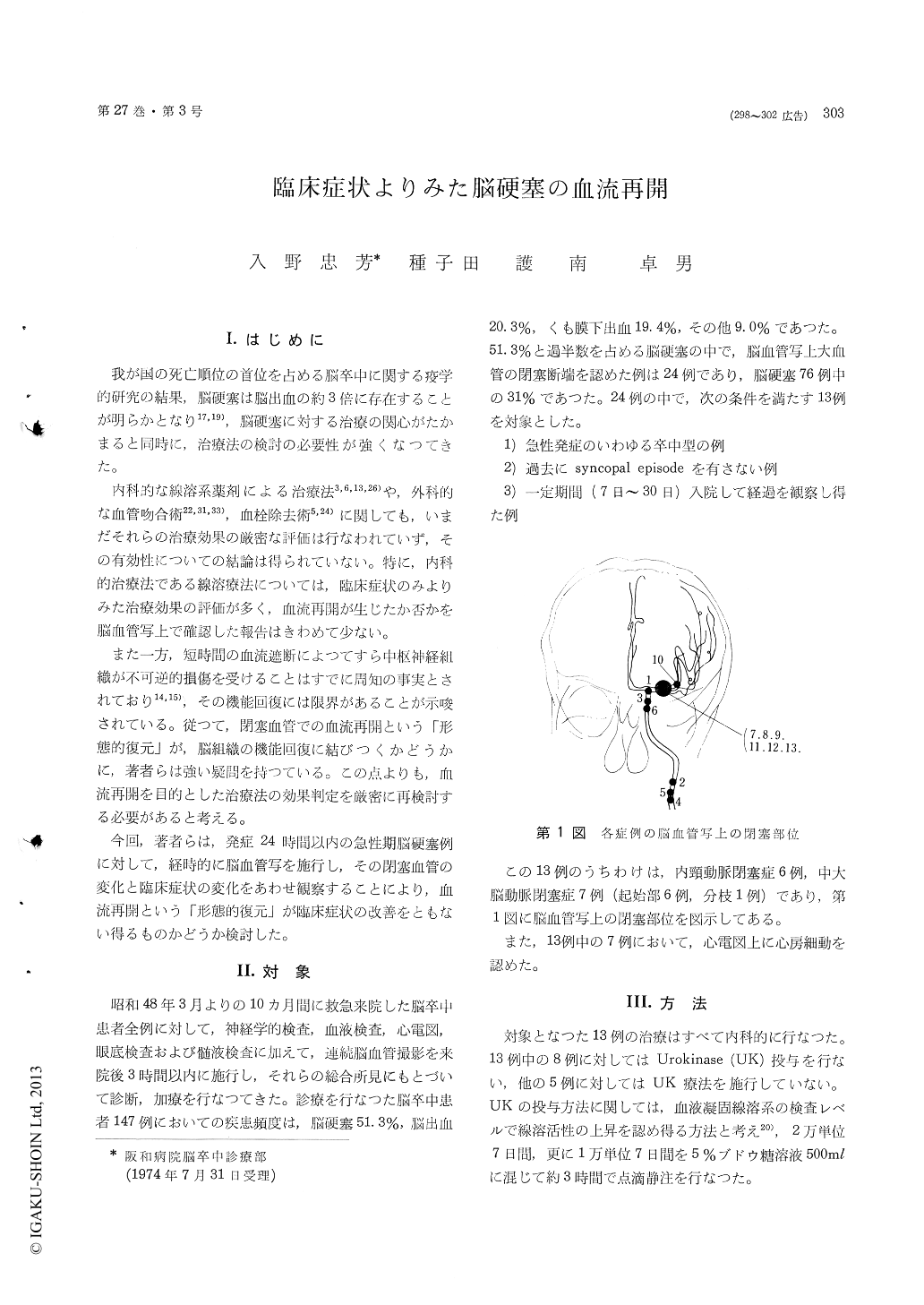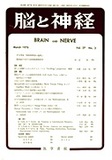Japanese
English
- 有料閲覧
- Abstract 文献概要
- 1ページ目 Look Inside
I.はじめに
我が国の死亡順位の首位を占める脳卒中に関する疫学的研究の結果,脳硬塞は脳出血の約3倍に存在することが明らかとなり17,19),脳硬塞に対する治療の関心がたかまると同時に,治療法の検討の必要性が強くなつてきた。
内科的な線溶系薬剤による治療法3,6,13,26)や,外科的な血管吻合術22,31,33),血栓除去術5,24)に関しても,いまだそれらの治療効果の厳密な評価は行なわれていず,その有効性についての結論は得られていない。特に,内科的治療法である線溶療法については,臨床症状のみよりみた治療効果の評価が多く,血流再開が生じたか否かを脳血管写上で確認した報告はきわめて少ない。
A comparative study of clinical observation with angiographic inspection was performed in thirteen patients with major cerebral arterial occlusion. These cases comprised seven of middle and six of internal carotid arterial occlusion, who were di-agnosed following physical and angiographical find-ings within twenty-four hours of the stroke. Six were diagnosed as cerebral thrombosis due to arterio-sclerosis and seven were suspected as having cere-bral embolism associated with atrial fibrillation. Fibrinolytic agent (Urokinase) was used at eight cases.
Cerebral angiography was repeatedly performed. The first angiogram was done within twenty-four hours of acute onset, and the second after three days or/and seven days of the stroke to inspect whether recanalization of the occluded artery oc-cured or not. Clinical observation was based on the three clinical points, consciousness, muscle strength and aphasia.
Consequently, three of internal and four of middle cerebral arterial occlusion were demonstrated re-canalization angiographically within seven days of their stroke. Not all of the cases with recanal-ization received fibrinolytic therapy. These seven cases showed no clinical improvement in spite of their angiographical restration to normal circulation.Among the remaining six cases without recanal-ization, two could return to normal social life after two months of stroke.
Thus from the data mentioned above, it can be seen apparently that recanalization therapy has no sufficient clinical effect in acute apoplectic patients suffering from cerebral infarction.

Copyright © 1975, Igaku-Shoin Ltd. All rights reserved.


